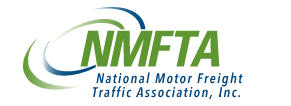NMFC Codes
NMFC Shipping Guide
NMFC Codes
To route an LTL shipment, most carrier contracts require the population of an NMFC Code which is gathered largely through having the proper density of the shipment. The NMFC Code populates the freight class, and is essential to get an accurate rate. TLI's TMS system provides shippers an NMFC Lookup tool along with an integrated density calculator and freight class calculator. This creates major efficiency gains for shippers that are looking for the proper NMFC code.

Dimensionalizers
"We could tell you numerous stories with the LTL carriers looking in on the dimensional freight and cubic capacity issues. These carriers are going out and putting dimensionalizers in at each and every one of their terminals. How big of an investment are those dimensionalizers? One of the owners of a very large regional carrier told me that they spend about $80,000 - $85,000 on a dimensionalizer and the payback was 19 days. Because what the carriers (LTL carriers in particular) are able to do now is to size the shipment for each and every thing that’s getting on their trailer. You have the size of the shipment as well as the weight of the shipment, and you can certainly figure out the susceptibility to damage. You’re having customers and shippers that are having discussions with their carriers about the reclassification of freight being tended to that carrier. We had a shipper call us up and ask about the process for challenging this change that the carrier wants to effect, where they’re going from a class 70 to a class 92.5. This is a big deal." - Stifel Transportation Research
(Predictable Surprises: Tight Capacity & Higher Rates on the Horizon)

Automate NMFC codes?
Absolutely! Say hello to efficiency in freight management with TLI's innovative Freight Class Calculator. Gone are the days of manual NMFC code determinations and freight class calculations. Our tool streamlines the entire process by automatically assessing your shipment's characteristics and providing the precise NMFC code and freight class, thanks to its integrated density calculator. No more guesswork or time-consuming research; just input the shipment details into the TMS System, and voila! Through integration, you can even equip this tool directly into your ERP. The TMS system takes care of the rest even including auto-tenders to the carriers for pickup request, and receive freight bills ensuring accurate classifications.
Experience the power of automation in freight classification! Our Freight Class Calculator isn't just another tool—it's your logistics lifeline. By incorporating a built-in density calculator, it not only determines the NMFC code and freight class but also optimizes packaging and shipping decisions. It's a game-changer, offering real-time insights that empower your logistics team to make informed choices, reduce errors, and ultimately cut costs. Streamline your operations and elevate your shipping strategy with a tool designed to simplify complex freight classification effortlessly.
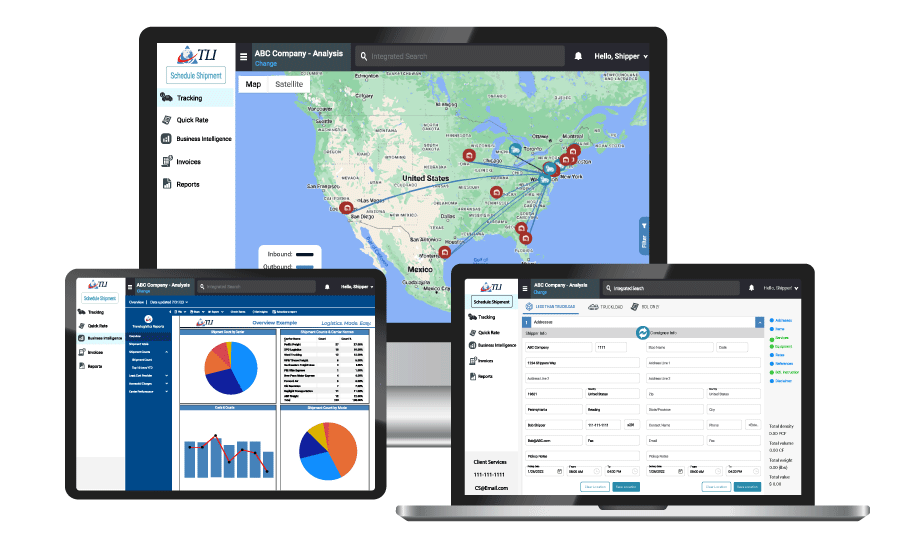
NMFC Codes
At Translogistics (TLI), we recognize the pivotal role these NMFC codes play in determining accurate freight rates and ensuring accurate freight classification of goods. That's why partnering with TLI becomes the strategic choice for shippers aiming for efficiency, accuracy, and cost-effectiveness in their logistics.
Our proprietary Transportation Management System (TMS) is the game-changer in shipping with accurate NMFC codes, and the proper freight classification. Within this robust system lies our NMFC Calculator—a cutting-edge tool that automates the selection of commodities based on predefined density parameters. This feature streamlines the classification process, accurately assigning the correct NMFC codes to your freight, saving time, reducing errors, and ensuring compliance.
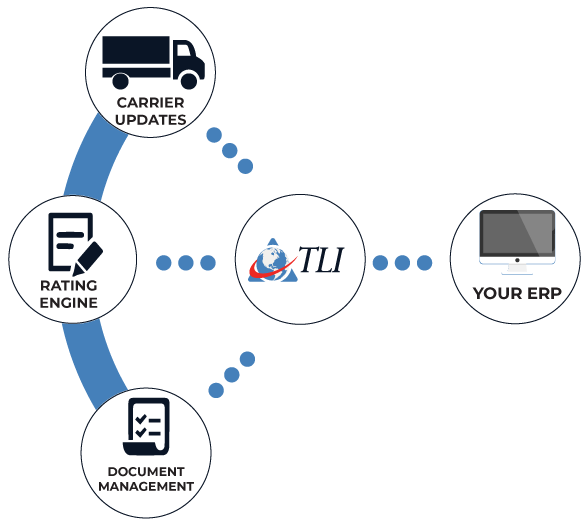
Our NMFC Calculator within the TMS system epitomizes efficiency and accuracy, making the complex world of NMFC codes a seamless experience. Shippers should note the dynamic nature of codes as they can be changed throughout the year, making it a wise decision to select a scalable solution to delegate the code selection to TLI. Through easy to use technology, TLI can not only automate NMFC code selection, but also offer freight audits using the initial quote to match against the carrier invoice. Partner with TLI today and witness the transformation of your shipping processes into a streamlined, precise, and cost-effective operation.
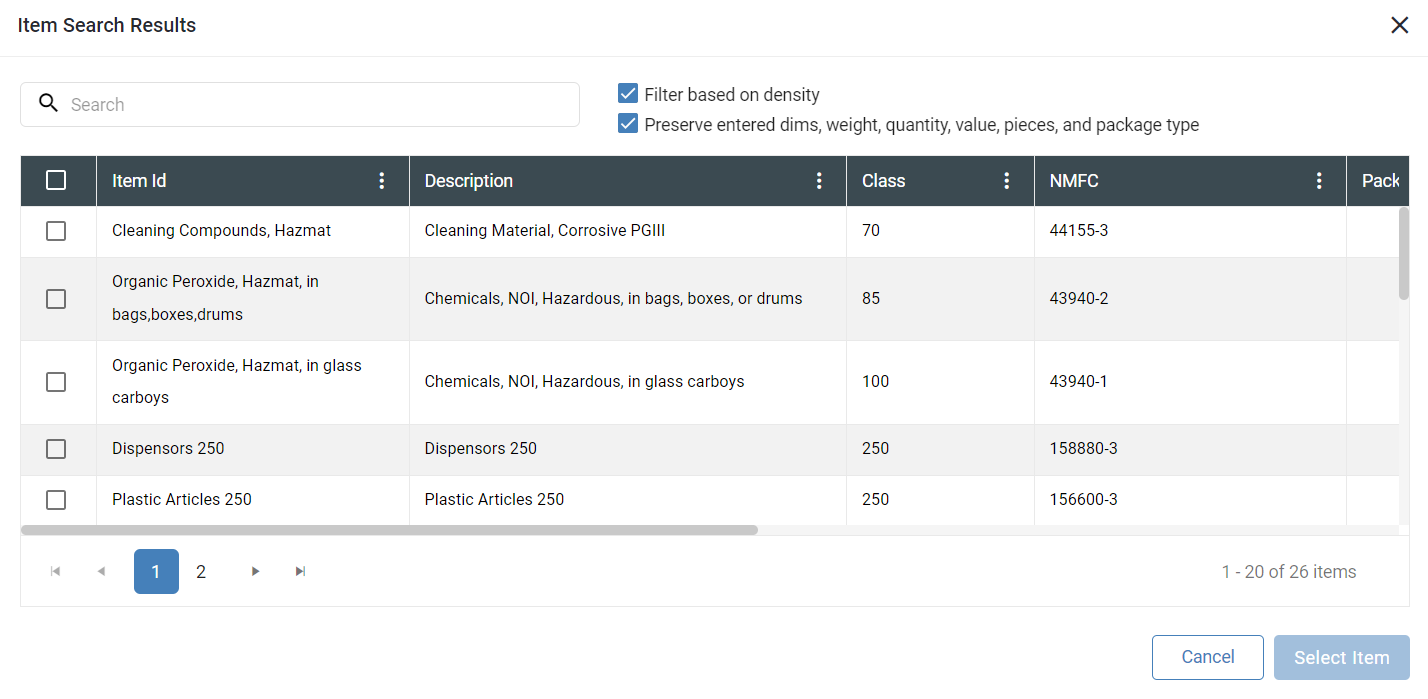
What are NMFC codes?
NMFC (National Motor Freight Classification) codes are a standardized system used in the freight shipping industry to classify and categorize various goods for transportation. They were established by the National Motor Freight Traffic Association (NMFTA) to ensure consistency in pricing, handling, and determining the appropriate freight charges for Less Than Truckload (LTL) shipments.
These NMFC codes assign a numerical value (Freight Class) to different types of commodities based on several factors such as density, stowability, handling, and liability. The NMFC code helps carriers and shippers understand the characteristics of the goods being transported, allowing them to determine the appropriate shipping rates, packaging requirements, and any special handling instructions.
Each NMFC code consists of a four- or five-digit number, sometimes followed by additional digits or letters for further specificity if they are subs or density based. These codes are essential for accurately describing the contents of shipments and are used extensively in the LTL shipping industry to streamline the shipping process and ensure that freight is properly categorized and priced.
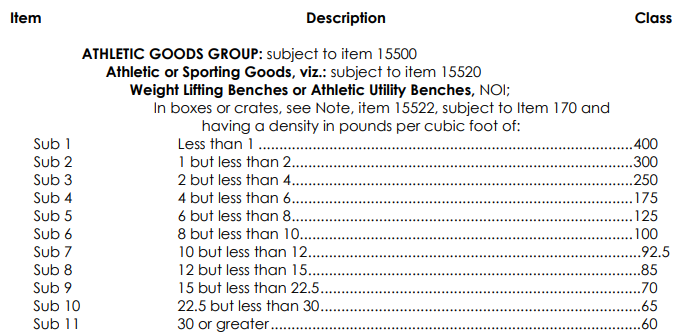
NMFC Codes
The National Motor Freight Traffic Association (NMFTA) is responsible for assigning and determining the actual National Motor Freight Classification (NMFC) codes. These codes are used to classify goods and commodities for shipment in the freight industry. NMFTA maintains and updates the NMFC, which consists of various codes that categorize different types of products based on their characteristics, handling, and transport requirements.
NMFC Codes get updated?
The National Motor Freight Classification (NMFC) is typically updated twice a year, in April and in October. These updates can involve changes to existing classification codes, the addition of new codes, or modifications to the descriptions and specifications of goods and commodities. These updates aim to reflect changes in the industry, technology, packaging, and other relevant factors that might impact the classification and transportation of goods. However, significant changes in between these biannual updates can occur if necessary due to regulatory changes, industry needs, or other critical reasons. So it is worth confirming, that updates can occur multiple times a year. This is another reason it is important to work with a 3PL broker like Translogistics to monitor and manage the proper NMFC code selection.
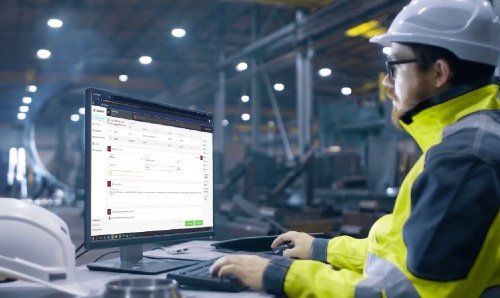
NMFC Codes in the LTL Market
Most Less Than Truckload (LTL) shipments require an NMFC (National Motor Freight Classification) code. The NMFC code helps carriers determine the appropriate freight class for the goods being shipped based on various factors such as density, stowability, handling, and liability.
Assigning the correct NMFC code is crucial because it determines the shipping rates and helps carriers understand how to handle and transport the goods. However, there might be some exceptions or certain types of shipments that don't strictly adhere to NMFC codes, especially if they are small or exempted categories, but for the vast majority of LTL shipments, NMFC codes play a significant role in determining freight rates and handling requirements.
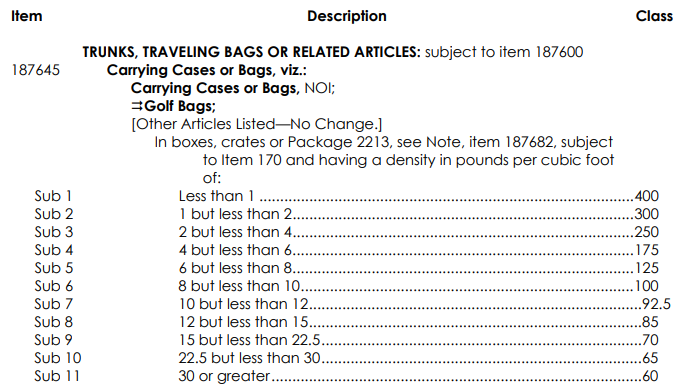
NMFC Classification
To determine the cost of LTL shipping, carriers use a system called the National Motor Freight Classification (NMFC). The NMFC is a standardized system that assigns a freight class to a shipment based on its contents. The freight class is used to determine the rate that the carrier will charge for transporting the goods.
Freight Classification
The freight classification is determined based on four factors: density, stowability, handling, and liability. The density of the shipment is calculated by dividing the weight of the shipment by its volume. The stowability of the shipment refers to how well it can be stored on a truck with other shipments. The handling of the shipment refers to the ease with which it can be loaded and unloaded from a truck. Finally, the liability of the shipment refers to the risk of damage or loss during transportation. To determine the freight class you will need the accurate NMFC number along with the shipment's PCF which is determined through the density calculator.
NMFC Freight Classes
The NMFC assigns a class number to each shipment based on its freight classification. The classes range from 50 to 500, with class 50 being the least expensive and class 500 being the most expensive. The higher the class number, the higher the rate that the carrier will charge for transporting the goods.
NMFC Number
Each item in the shipment is assigned an NMFC number, which is used to determine the appropriate class for the shipment. The NMFC number is a standardized code that describes the type of item being shipped. When navigating the complexities of NMFC coding for your shipments, precision is key.
Determining the correct NMFC number involves a few steps, and often starts with calculating the density of the freight. To do this:
- Measure and Weigh: Measure the dimensions (length, width, height) of the shipment in inches and weigh it in pounds.
- Calculate Volume: Multiply the length by the width by the height to get the total cubic inches of the shipment.
- Calculate Density: Divide the weight of the shipment in pounds by the total cubic feet (converted from cubic inches by dividing by 1728 - as there are 1728 cubic inches in a cubic foot). This gives you the pounds per cubic foot (PCF).
- Determine Freight Class: Once you have the PCF, you can look up the freight class in the NMFC book or database. The NMFC categorizes items based on density, stowability, handling, and liability. The freight class will correspond to the range of PCF your shipment falls into.
- Identify NMFC Number: Each freight class has associated NMFC numbers. Once you have determined the correct freight class, you can find the specific NMFC number(s) associated with it for your type of goods or commodity.
Avoid the pitfalls of manual calculations and potential errors by simplifying your process. TLI's expertise ensures that your shipment is allocated the correct NMFC number effortlessly. With our system in place, you can confidently ship your goods, knowing they're classified accurately and efficiently. Focus on your business while we handle the intricacies of freight classification—trust TLI for a smoother shipping experience every time.
Freight Audit
To ensure that the carrier is charging the correct rate for the shipment based off the predetermined NMFC code, it is important to perform a freight invoice audit. This involves comparing the shipment details, including the weight, volume, and freight class, with the carrier's invoice. If there are freight invoice discrepancies, they can be addressed and resolved before payment is made.
In conclusion, the NMFC classification system is an essential tool for determining the cost of LTL shipping. The freight class is a core factor in the rating of each less-than-truckload shipment. By assigning a freight class to a shipment based on its contents, carriers can charge a fair rate for transporting the goods. It is important for businesses to understand the NMFC system and perform a freight invoice audit to ensure that they are not overcharged for
LTL shipping.
NMFC Code Lookup
With a rich legacy spanning three decades, TLI understands the pivotal role NMFC codes play in the shipping industry. That's why we've engineered a game-changing solution: a comprehensive Transportation Management System (TMS) designed to automate and simplify the NMFC code lookup process.
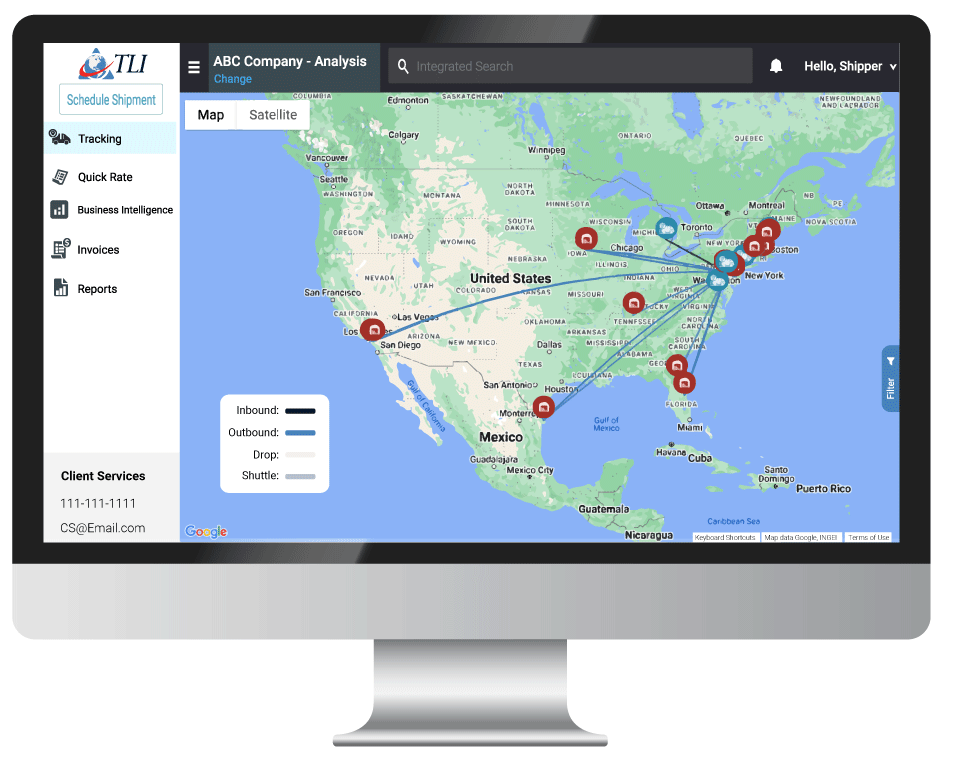
Here's how it works: within our system, we've meticulously uploaded a repository of accurate NMFC codes. Gone are the days of sifting through manuals or databases to find the right code—our system does it for you, swiftly and accurately.
The core of our TMS brilliance as pertinent to your inquiry here, lies in the built-in density calculator, a dynamic feature that automates PCF calculations. Input your shipment's dimensions and weight, and voilà! The system generates the precise PCF, retrieving only the relevant NMFC codes tailored to your cargo. This translates into obtaining the accurate freight class seamlessly and efficiently.

Why is this imperative for shippers? Picture this: accurate NMFC codes mean precise pricing. Say farewell to underestimations or overestimations—our system ensures you're billed accurately based on the characteristics of your cargo. It's not just about getting things done; it's about getting them done right.
Scaling your business demands a robust infrastructure, and accurate pricing is the bedrock. Leveraging our TMS isn't just a convenience; it's a strategic move toward efficient operations and cost optimization. With TLI's TMS, empower your business to grow, thrive, and navigate the intricacies of shipping with unparalleled accuracy and ease. Experience the difference—empower your shipments, empower your business with Translogistics.

Achieving an accurate freight bill hinges on having the correct NMFC number for your shipments. TLI's TMS system streamlines the process of identifying the precise NMFC numbers your cargo demands. Say goodbye to tedious manual searches and lengthy mathematical calculations; our NMFC Lookup feature ensures that every shipment is assigned the right classification, leading to precise freight bills. Simplify your operations and guarantee accuracy—our TMS and its NMFC Lookup feature are exactly what you need for a seamless shipping experience.
TLI Insights
Get the latest logistics insights and tips from Translogistics’ award-winning team. Stay ahead in transportation planning.
Questions? Email us at marketing@tli.email
Check out more Blog Posts from TLI:
Get a Quote
Customer Service
Contact Us
All Rights Reserved | TLI
Services
Support
Company
Services
Support
Company
Get a Quote
Support
Contact Us
All Rights Reserved | TLI

